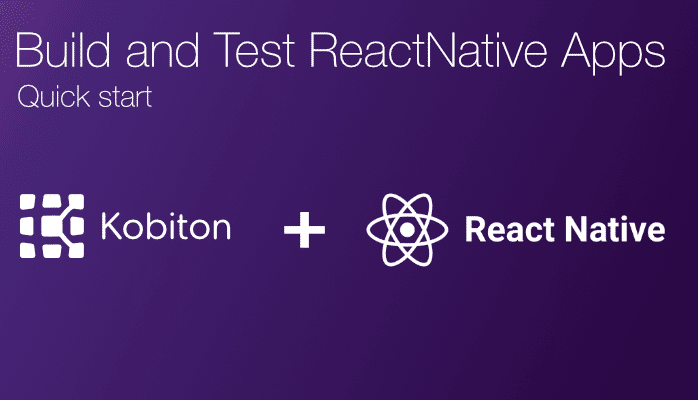
Develop, Deploy, and Test Apps with Expo Development Client

Erin Bailey
The pandemic has made it abundantly clear that digitalization is more critical than ever for the success of a business. With remote work taking precedence across industries, social distancing protocols, and lockdowns becoming more frequent, organizations are increasingly dependent on technology for survival.
The Fintech sector has seen numerous advancements, including contactless payment methods and digital banking opportunities. In fact, an analysis of Fintech firms shows a 13% increase during the pandemic’s peak periods.
Considering this, if your business provides financial services or your business model involves a financial institution, you must capitalize on Fintech.
If you’re wondering how to get started, this guide will help you out. Let’s dive in to see how to build a fintech app.
The term Fintech is a combination of finance and technology. Fintech applications are platforms that allow money transfers and provide other financial services using cutting-edge technology.
The industry has grown significantly in recent years, enabling people to use virtual cards and smartphone applications to make payments, send money, and fulfill all their financial responsibilities conveniently.
Some common Fintech apps include Venmo and Stripe. But the term includes all kinds of loan apps, payment processors, personal finance apps, robo-advisors, and more.
When you’re creating a Fintech app, there are certain features that you need to include to make your application market competitive, user-friendly, speedy, and secure.
These are the integral elements of a Fintech application done right:
Biometric sign-in options upgrade the security of any application. Security is an integral component of the Fintech industry. Therefore, using biometrics to assign user access can make your application dependable and secure. Additionally, you can integrate biometrics by adding facial recognition, fingerprint scanning, or retina scanning system. Biometrics are essential for fintech app developers.
Another way to amplify the security of your application is via a multi-factor authentication system. Taking this initiative will allow users to gain access to their accounts only after they’ve typed in their password and passed other security controls. A multi-factor authentication system can also coincide with your biometric solution to increase your security. In fact, a report by Microsoft suggests that MFA can prevent 99.9% of account hacks. So when asking yourself how to develop a fintech app, it is nearly essential to include MFA.
A blockchain is a form of decentralized technology that provides a secure and transparent means to safeguard vulnerable financial data. By implementing blockchain in your Fintech application, you can offer faster, affordable, and secure transactions. Additionally, blockchain’s nature makes it impossible to alter transfer data, thus protecting users from fraud and making it a preferred integration by fintech app developers.
You can also add a feature of convenience to your Fintech application by enabling QR scanning. QR scanning allows users to make payments digitally by simply scanning the QR code. This feature is affordable and convenient, making it a popular option among users and fintech app developers. In fact, research shows that by 2025, the number of QR users will reach 2.2 billion.
You can also provide convenience to your users by offering them a way to track their transactions. This can be done by integrating a data analytics feature that includes flexible financial tracking and reporting. As a result, your application can provide users with their transaction history and offer insight into their spending.
When developing a Fintech app, keep these steps in mind:
The first step in building any application is research. You need to understand your niche, your market, target demographics, and their needs for the application. You can also examine your competitors to make insightful and educated decisions when developing your own application.
Creating a Fintech application requires collective effort. To make the process easy, you can outsource the project to Fintech app developers or build your team of developers (Android and iOS), UI/UX designers, and software testers, and DevOps engineers.
Having an understanding of legal requirements is critical for Fintech applications. Before building the app, make sure it complies with the legal regulations in your area.
It would be best to create a Minimum Viable Product scope for the application. You can do this by carrying out comprehensive market research and brainstorming ideas with your development team.
You can use basic technologies, including Android, Objective C, or Swift, to build an application. Moreover, you can also use cross-application development tools, which will be an ideal option if you have a low budget.
The API determines how the application communicates with one another. It would help if you established an effective API that allows the front-end of the mobile application to transfer and receive information from the server or the back end.
APIs are critical for Fintech applications, as they enable the connection with third-party servers and resources.
Once the functionality and design elements of the Fintech application are cared for, you can move on to the next step of testing the app. Testing is a significant component of the development phase. It allows you to discover any bugs or errors preventing your app from reaching its full potential. You can do this by launching the Beta version to be used by your teams. The feedback from the testing phase can then be used to help you refine and upgrade the application as you deem necessary. You can also test the FinTech application for errors by using the Kobiton testing platform. This platform enables comprehensive quality testing to help you optimize the app.
The Fintech industry is growing by the second. And if you operate in this industry, it is imperative to cash in on the opportunity to develop an application that streamlines operations for its users. When creating a Fintech app, make sure to integrate high-tech features that optimize security, safety, and convenience. You can also follow the preceding tips on how to build a Fintech app to ensure your application meets all its objectives. Once your application is complete, be sure to run it on Kobiton to make sure it has reached its optimal potential.